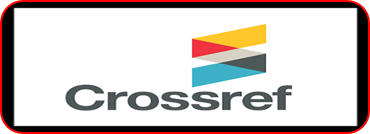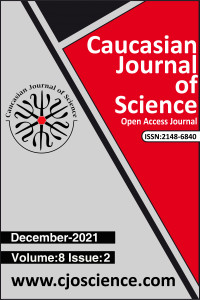Abstract
Turkey in the 2017 academic year, the program development
work was carried out. This program development includes re-updating the current
program. This change started to be implemented in Grades 5 as of 2017-2018
academic year. Therefore, when the current literature is examined, there is no
success test that includes the renewed program. There have been changes in the
current program. In the previous program, the subject of light is located under
the ıl Propagation of Light and Sound ’unit. After the recent changes, the
subject of light was separated from the subject of sound and arranged as a unit
under the Yay Diffusion of Light ’unit. In the previous program, 6. Smooth
reflection, diffuse reflection and laws of reflection ta in Grade 6 were
included in the 5th Grade m Diffusion of Light ’unit. In addition, variables
that affect the size of the complete shadow; ‘In the formation of a complete
shadow, only the relationship between the position of the object and the light
source and the size of the shadow is emphasized. Tır While the gains of the
previous program include a statement that the eclipse of the sun and the moon
is a shadow event, the last regulations have been removed and this explanation
has been removed and the traditional shadow games have been associated with a
full shadow event. All of these changes required the development of a new
achievement test for the 5th Class ıl Spread of Light ’unit. The aim of this
study is to develop the Başarı Light Dissipation Unit Achievement Test yönelik
for 5th grade students in secondary school. In this research, screening model
was used. In order to determine the validity of the tests and scales, 372
secondary school students were piloted. As a result of the pilot application;
Sor Light Dissipation Unit Achievement Test (IYÜBT) 30 which consists of 30
questions was prepared. The reliability analysis was performed with Kuder
Richardson 20 (KR-20) internal consistency coefficient, item discrimination and
item difficulty index for the test. For the test validity, the content
validity, appearance validity and structure validity were examined. As a result
of validity and reliability studies, Başarı Light Dissipation Unit Achievement
Test ’was found to be valid and reliable.
Keywords
References
- 1. Akgül, A. ve Çevik, O. (2005). İstatistiksel analiz teknikleri, SPSS’te işletme yönetimi uygulamaları (2. Baskı). Ankara: Emek Ofset.
- 2. Andersson, B. & Kärrqvist, C. (1983). How Swedish pupils understanding light and it’s properties, European Journal of Science Education, 5, 387-402.
- 3. Ayas, A., Karamustafaoğlu, O., Sevim, S., & Karamustafaoğlu, S. (2001). Fen bilgisi öğrencilerinin bilgilerini günlük yaşamla ilişkilendirebilme seviyeleri. Yeni Bin Yılın Başında Fen Bilimleri Eğitimi Sempozyumu, Maltepe Üniversitesi Eğitim Fak, 7-8.
- 4. Büyüköztürk, Ş. (2011). Sosyal Bilimler için veri analizi el kitabı (14.baskı) Ankara: Pegem Akademi.
- 5. Çepni, S., Bayrakçeken, S., Yılmaz, A., Yücel, C., Semerci, Ç., Köse, E., Sezgin, F., Demircioğlu, G. ve Gündoğdu, K. (2008). Ölçme ve Değerlendirme. Ankara: Pagem Akademi.
- 6. Galili, I. & Hazan A. (2000). Learners‘ knowledge in optics: interpretation, structure and analysis, International Journal of Science Education, 22, 57-88.
- 7. Gönen, S., Kocakaya, S. ve Kocakaya, F. (2011). Dinamik konusunda geçerliliği ve güvenilirliği sağlanmış bir başarı testi geliştirme çalışması. Yüzüncü Yıl Üniversitesi Eğitim Fakültesi Dergisi, 8(1), 40-57.
- 8. Guesne, E. (1984). Die Vorstellungen von Kindern über Licht, Physica didactica, 11, 79-98.
- 9. Gündoğdu, K. (2008). Ölçme ve Değerlendirme. Ankara: Pagem Akademi.
- 10. Ramadas, J. & Driver, R. (1989). Aspects of secondary students’ ideas about light, Leeds, UK: University of Leeds, Center for Studies in Science and Mathematics Education
- 11. Saxena, A.B. (1991). The understanding of the properties of light by students in India, International Journal of Science Education, 13, 283-289.
- 12. Selley, N.J. (1996). Children’s ideas on light and vision, International Journal of Science Education, 18, 713-723.
- 13. Sevim, S. (2013). Promoting Conceptual Change in Science Which is More Effective: Conceptual Change Text or Analogy? Journal Of Turkish Science Education. Volume 10, Issue 3.
- 14. Sevim, S. ve Tarım, S.S. (2017). Comparison of the Conceptual Change of Analogies and Conceptual Change Texts in Eliminating Students’ Alternative Conceptions for Acids and Bases. Turkish Journal of Teacher Education Vol. 6(1) 47-60.
- 15. Stead, B.F. & Osborne, R.J. (1980). Exploring science students’ conceptions of light, Australian Science Teaching Journal, 26, 84-90.
- 16. Tavşancıl, E. (2010). Tutumların ölçülmesi ve SPSS ile veri analizi. Ankara: Nobel Yayın Dağıtım.Tezbaşaran, A. (1997). Likert tipi ölçek geliştirme kılavuzu. Ankara: Türk Psikologlar Derneği Yayınları.
- 17. Togerson, W.S. (1958). Theory and Methods of Scaling, New York: Wiley.Turgut, M. F. ve Baykul, Y. (1992). Ölçekleme Teknikleri, ÖSYM Yayınları, Ankara.
Abstract
Türkiye’de de 2017 eğitim-öğretim yılında program geliştirme
çalışması gerçekleştirilmiştir. Bu program geliştirme çalışması mevcut
programın yeniden güncellenmesini içermektedir. Bu değişiklik 2017-2018
eğitim-öğretim yılından itibaren 5. Sınıflarda uygulanmaya başlamıştır. Bu
yüzden mevcut literatür incelendiğinde yenilenen programı tam olarak içeren bir
başarı testi bulunmamaktadır. Mevcut programda değişiklikler olmuştur. Önceki
programda ışık konusu ‘Işığın ve Sesin Yayılması’ ünitesi altında yer almaktadır.
Son değişikliklerden sonra ışık konusu ses konusundan ayrılarak ‘Işığın
Yayılması’ ünitesi altında bir ünite olarak düzenlenmiştir. Ayrıca önceki
programda 6. Sınıfta yer alan ‘Düzgün yansıma, dağınık yansıma ve yansıma
kanunları’ konuları 5. Sınıf ‘Işığın Yayılması’ ünitesi kapsamına alınmıştır.
Buna ek olarak tam gölgenin büyüklüğünü etkileyen değişkenler; ‘Tam gölgenin
oluşumunda sadece cismin ve ışık kaynağının konumları ile gölgenin büyüklüğü
arasındaki ilişki üzerinde durulur.’ Şeklinde sınırlandırılmıştır. Önceki
programın kazanımlarında güneş ve ay tutulmasının da birer gölge olayı
olduğunun belirtilmesi şeklinde bir açıklama yer alırken son düzenlemelerden
sonra bu açıklama kaldırılarak geleneksel gölge oyunlarının tam gölge olayı ile
ilişkilendirilmesi şeklinde bir açıklama gelmiştir. Tüm bu değişiklikler 5.
Sınıf ‘Işığın Yayılması’ ünitesi ile ilgili yeni bir başarı testi
geliştirilmesi ihtiyacını doğurmuştur. Bu araştırmanın amacı, ortaokul 5. Sınıf
öğrencilerine yönelik ‘Işığın Yayılması Ünitesi Başarı Testi’ geliştirmektir.
Bu araştırmada tarama modeli kullanılmıştır. Test ve ölçeklerin geçerliliğini
belirlemek amacıyla 372 ortaokul öğrencisi ile pilot uygulama yapılmıştır.
Pilot uygulama neticesinde; 30 sorudan oluşan çoktan seçmeli ‘Işığın Yayılması
Ünitesi Başarı Testi (IYÜBT)’ hazırlanmıştır. Güvenirlik analizi, test için
Kuder Richardson 20 (KR-20) iç tutarlık kat sayısı, madde ayırt edicilik ve
madde güçlük indeksi ile yapılmıştır. Test geçerliliği için kapsam geçerliliği,
görünüş geçerliliği ve yapı geçerliliğine bakılmıştır. Yapılan geçerlilik ve
güvenirlik çalışmaları neticesinde, ‘Işığın Yayılması Ünitesi Başarı Testi’ nin
geçerli ve güvenilir nitelikte olduğu belirlenmiştir.
Keywords
References
- 1. Akgül, A. ve Çevik, O. (2005). İstatistiksel analiz teknikleri, SPSS’te işletme yönetimi uygulamaları (2. Baskı). Ankara: Emek Ofset.
- 2. Andersson, B. & Kärrqvist, C. (1983). How Swedish pupils understanding light and it’s properties, European Journal of Science Education, 5, 387-402.
- 3. Ayas, A., Karamustafaoğlu, O., Sevim, S., & Karamustafaoğlu, S. (2001). Fen bilgisi öğrencilerinin bilgilerini günlük yaşamla ilişkilendirebilme seviyeleri. Yeni Bin Yılın Başında Fen Bilimleri Eğitimi Sempozyumu, Maltepe Üniversitesi Eğitim Fak, 7-8.
- 4. Büyüköztürk, Ş. (2011). Sosyal Bilimler için veri analizi el kitabı (14.baskı) Ankara: Pegem Akademi.
- 5. Çepni, S., Bayrakçeken, S., Yılmaz, A., Yücel, C., Semerci, Ç., Köse, E., Sezgin, F., Demircioğlu, G. ve Gündoğdu, K. (2008). Ölçme ve Değerlendirme. Ankara: Pagem Akademi.
- 6. Galili, I. & Hazan A. (2000). Learners‘ knowledge in optics: interpretation, structure and analysis, International Journal of Science Education, 22, 57-88.
- 7. Gönen, S., Kocakaya, S. ve Kocakaya, F. (2011). Dinamik konusunda geçerliliği ve güvenilirliği sağlanmış bir başarı testi geliştirme çalışması. Yüzüncü Yıl Üniversitesi Eğitim Fakültesi Dergisi, 8(1), 40-57.
- 8. Guesne, E. (1984). Die Vorstellungen von Kindern über Licht, Physica didactica, 11, 79-98.
- 9. Gündoğdu, K. (2008). Ölçme ve Değerlendirme. Ankara: Pagem Akademi.
- 10. Ramadas, J. & Driver, R. (1989). Aspects of secondary students’ ideas about light, Leeds, UK: University of Leeds, Center for Studies in Science and Mathematics Education
- 11. Saxena, A.B. (1991). The understanding of the properties of light by students in India, International Journal of Science Education, 13, 283-289.
- 12. Selley, N.J. (1996). Children’s ideas on light and vision, International Journal of Science Education, 18, 713-723.
- 13. Sevim, S. (2013). Promoting Conceptual Change in Science Which is More Effective: Conceptual Change Text or Analogy? Journal Of Turkish Science Education. Volume 10, Issue 3.
- 14. Sevim, S. ve Tarım, S.S. (2017). Comparison of the Conceptual Change of Analogies and Conceptual Change Texts in Eliminating Students’ Alternative Conceptions for Acids and Bases. Turkish Journal of Teacher Education Vol. 6(1) 47-60.
- 15. Stead, B.F. & Osborne, R.J. (1980). Exploring science students’ conceptions of light, Australian Science Teaching Journal, 26, 84-90.
- 16. Tavşancıl, E. (2010). Tutumların ölçülmesi ve SPSS ile veri analizi. Ankara: Nobel Yayın Dağıtım.Tezbaşaran, A. (1997). Likert tipi ölçek geliştirme kılavuzu. Ankara: Türk Psikologlar Derneği Yayınları.
- 17. Togerson, W.S. (1958). Theory and Methods of Scaling, New York: Wiley.Turgut, M. F. ve Baykul, Y. (1992). Ölçekleme Teknikleri, ÖSYM Yayınları, Ankara.
Details
| Primary Language | Turkish |
|---|---|
| Journal Section | Caucasian Journal of Science |
| Authors | |
| Publication Date | December 31, 2021 |
| Submission Date | November 8, 2019 |
| Acceptance Date | December 30, 2021 |
| Published in Issue | Year 2021 Volume: 8 Issue: 2 |
Cited By








